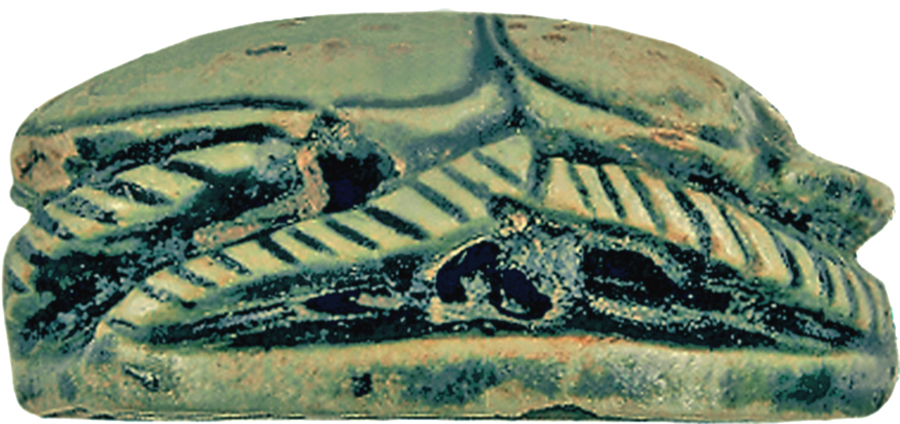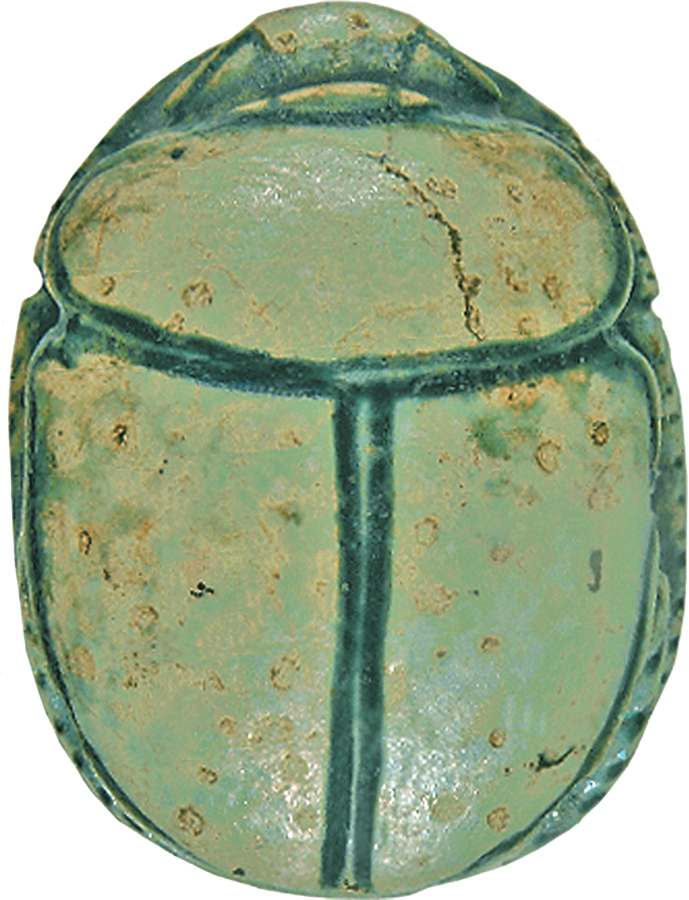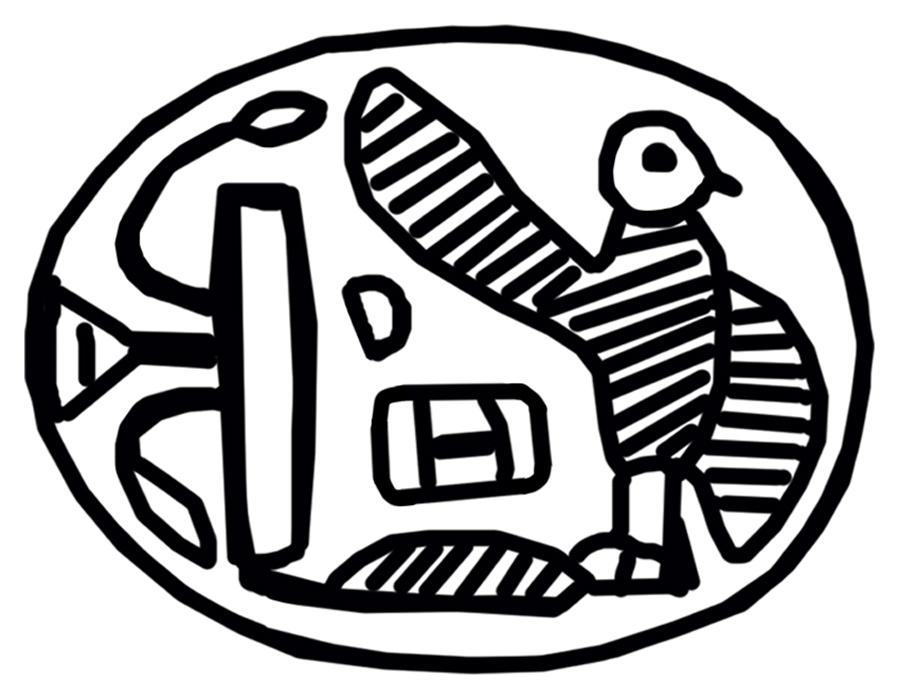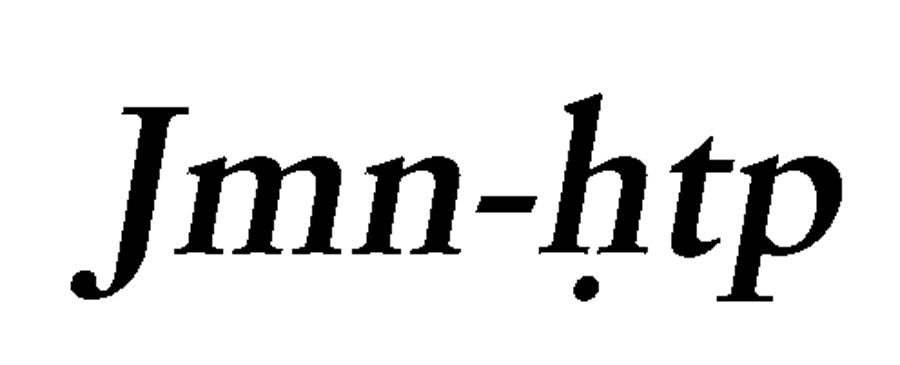Scarab with Bird and Papyrus
(Ancient Egypt and Nubia )
The ancient Egyptians believed that the dung beetle, the Scarabaeus sacer, was one of the manifestations of the sun god. Representations of these beetles were used as amulets, and for ritual or administrative purposes.
This scarab has a flat bottom with a special design that combines of images and hieroglyphs. The layout of the deeply incised design is unusually organized, the hieroglyphs face in different directions, and some collides with the borderline. The dominant icons are: a hawk with his outstretched wings, and a left rotated pool with the flowers. An oval line frames the arrangement. It may be possible to interpret the sign combination as cryptographic writing of the royal name Amenhotep. The highest point of the back of the scarab is the double partition line between pronotum (dorsal plate of the protorax) and elytron (wing cases). Both parts have incised borderlines, and a double division line separates the wing cases; the line flow is slightly irregular. The semi-oval head is flanked by triangular eyes; the triangular side plates have outer borderlines, and the clypeus (front plate) is marked. The head section is very short, and the head itself small in comparison to the clypeus. The extremities have natural form and diagonal hatch lines for tibial teeth and pilosity (hair). The oval base is asymmetrical shaped having slightly smaller head part.
The scarab is longitudinally pierced, was originally mounted or threaded, and used as an amulet. The design should secure the close relation of this king to Amun, and provide a private owner with royal patronage of the current king. The are several arguments for dating the scarab in the reign of Amenhotep I and not in a later period: The figure of the hawk with wide outstretched wings, which is popular during the early Thutmoside Period, the round-oval shape of the base, as well as the clear and simple back design.
Inscription
Provenance
Provenance (from the French provenir, 'to come from/forth') is the chronology of the ownership, custody, or location of a historical object. Learn more about provenance at the Walters.
Henry Walters, Baltimore [date and mode of acquisition unknown]; Walters Art Museum, 1931, by bequest.
Geographies
Egypt (Place of Origin)
Measurements
H: 5/16 x W: 1/2 x L: 11/16 in. (0.8 x 1.3 x 1.7 cm)
Credit Line
Acquired by Henry Walters
Location in Museum
Not on view
Accession Number
In libraries, galleries, museums, and archives, an accession number is a unique identifier assigned to each object in the collection.
In libraries, galleries, museums, and archives, an accession number is a unique identifier assigned to each object in the collection.
42.74












